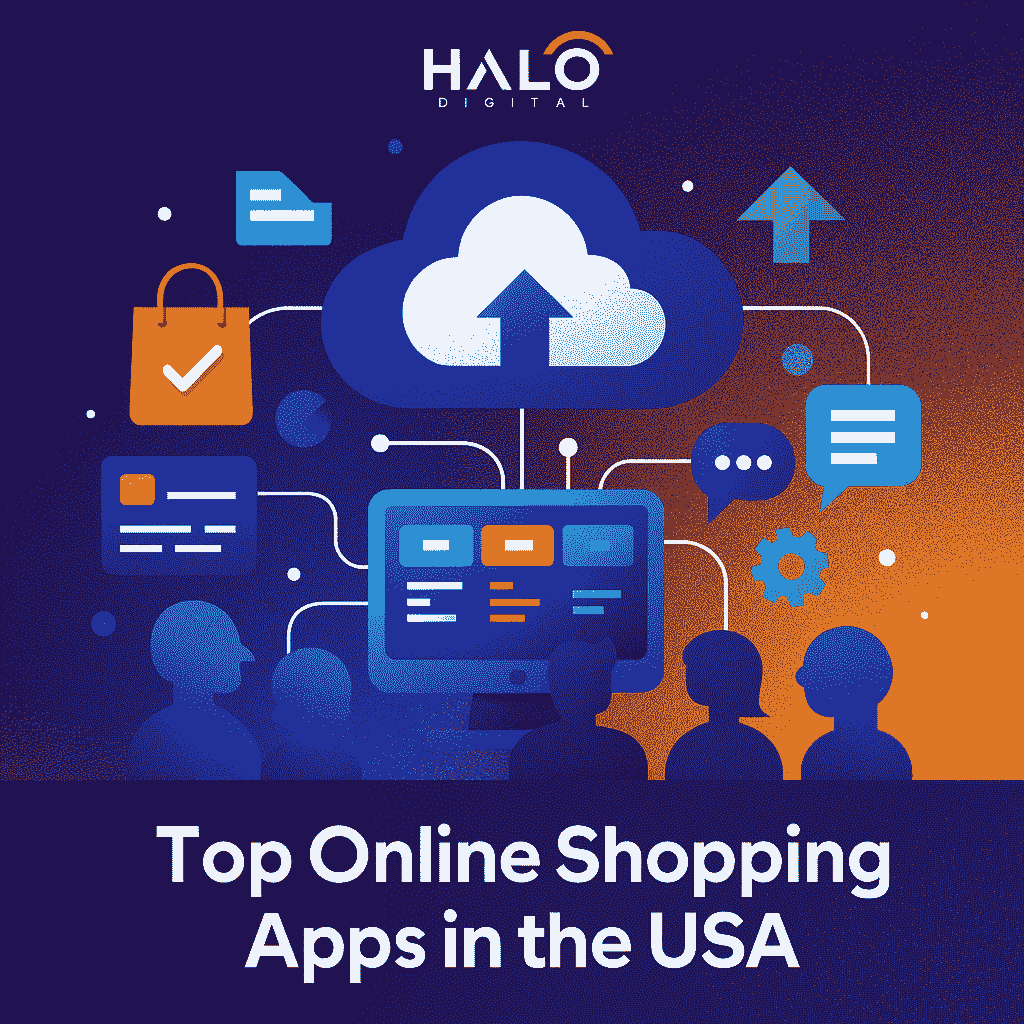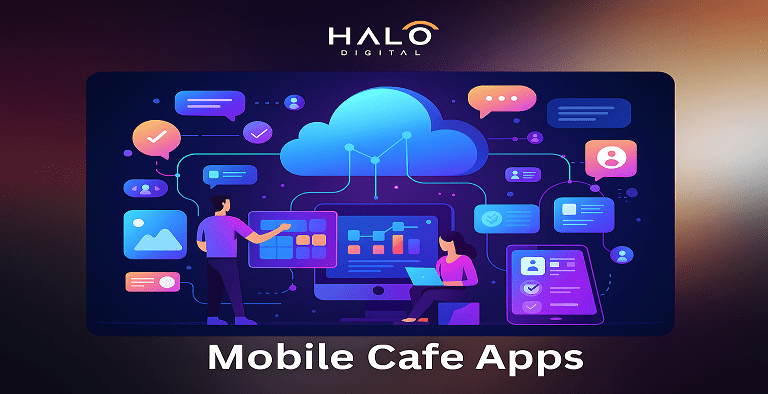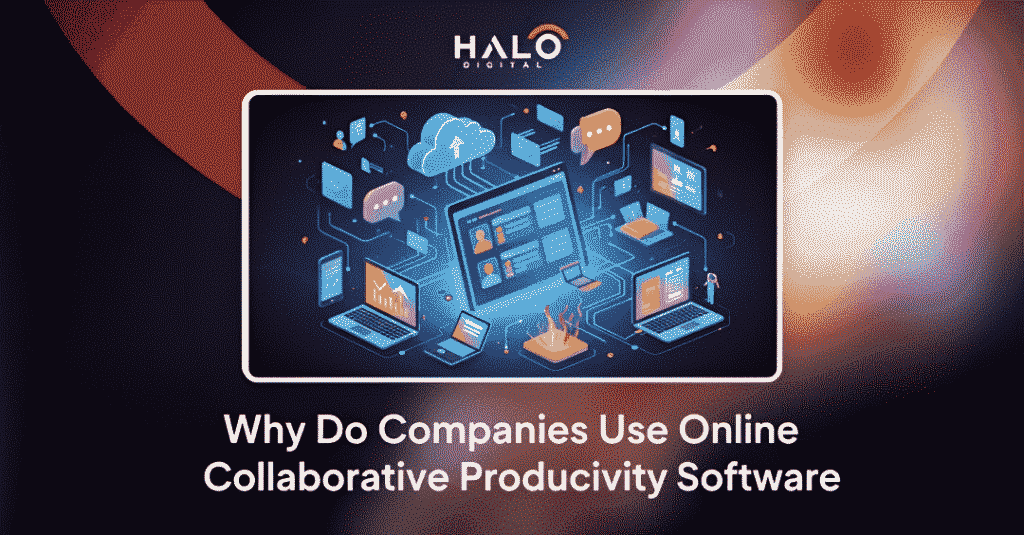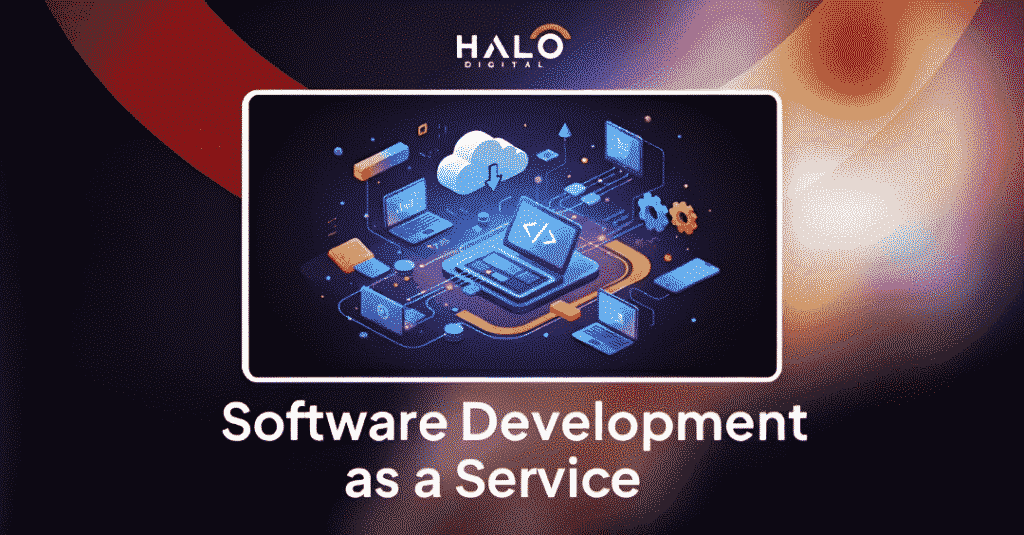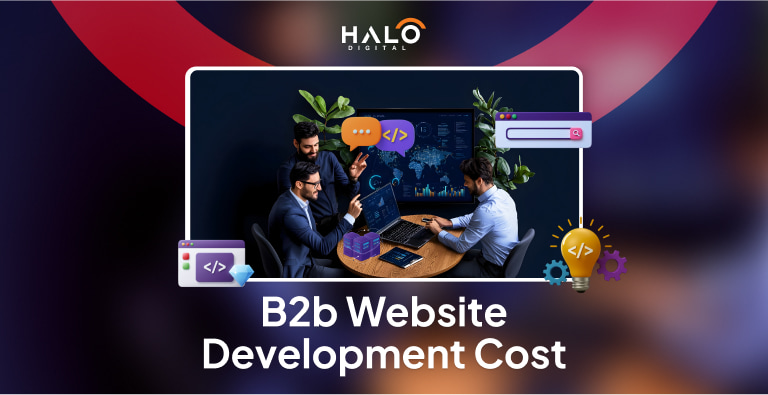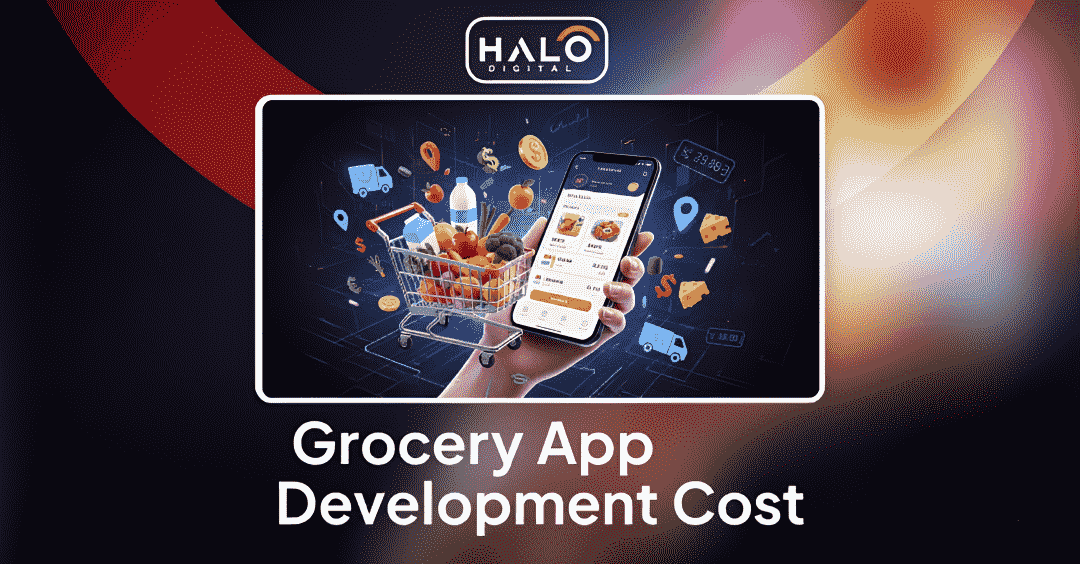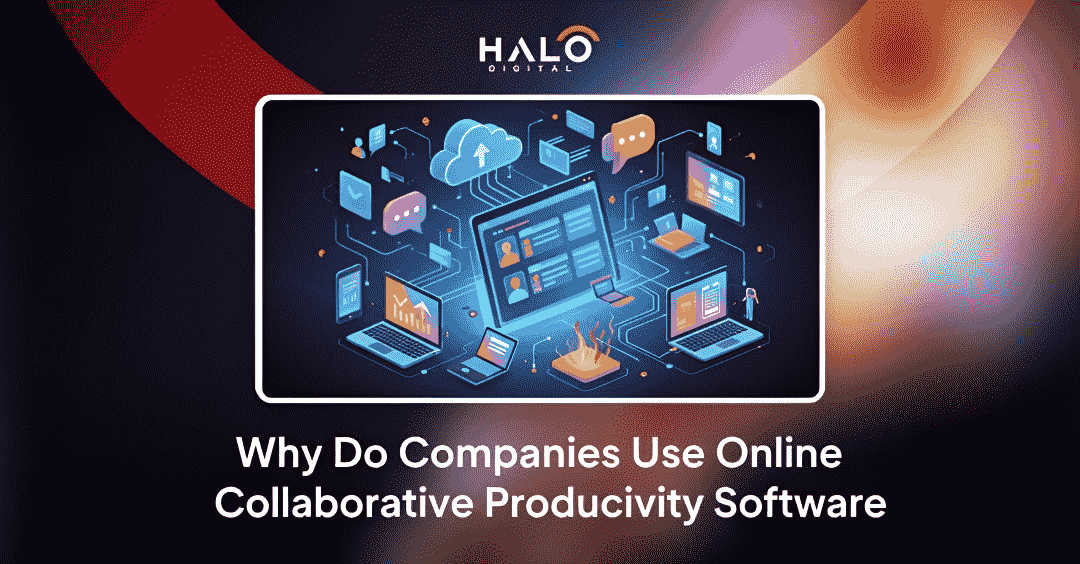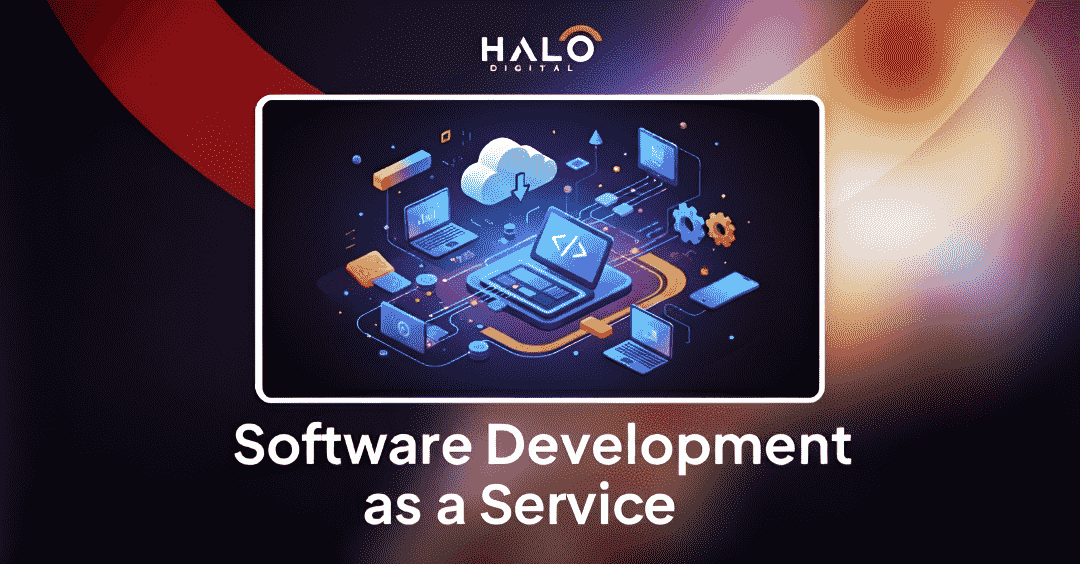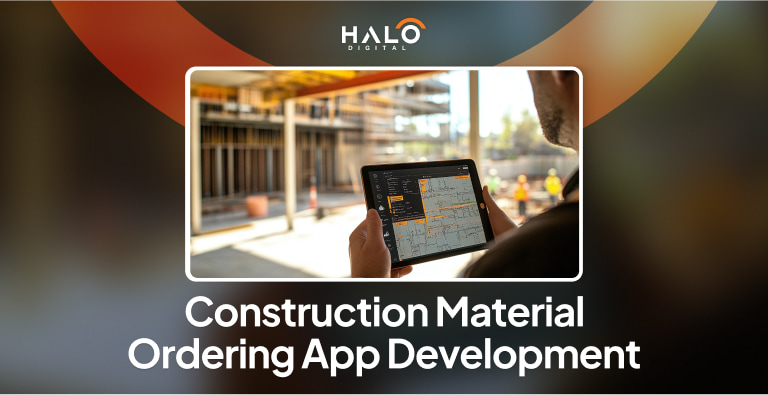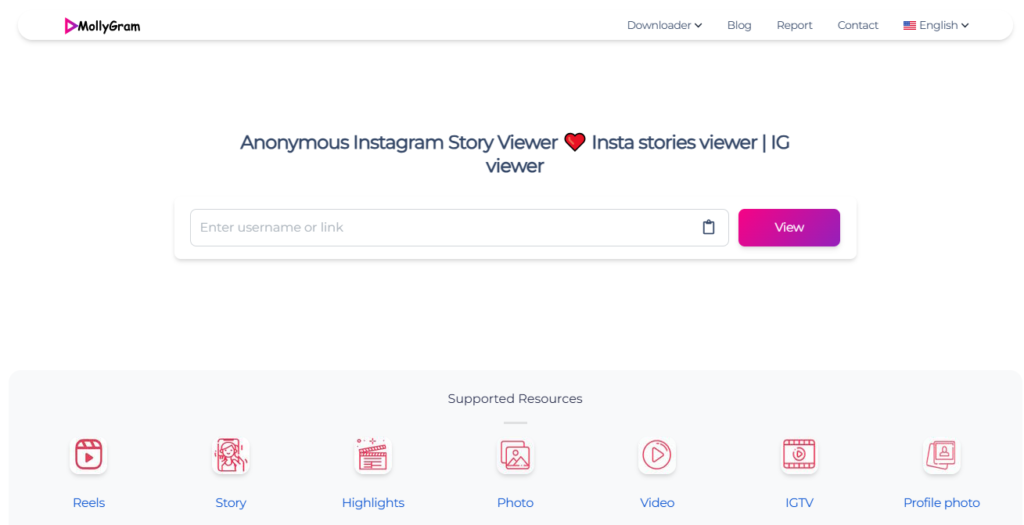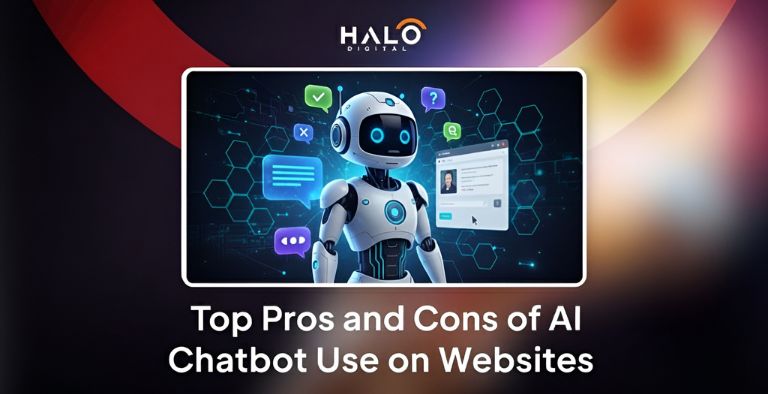- Building a grocery app in 2025 can cost anywhere from around $25,000 for a simple MVP to $200,000+ for a full-featured platform. From my experience, the cheapest way to keep costs under control is to start small,
- use cross-platform tools, and work with skilled teams in cost-effective regions. In this guide,
- I’ll walk you through what really drives grocery app costs and how to budget smartly.
Building a grocery app in 2025 can cost anywhere from around $25,000 for a simple MVP to $200,000+ for a full-featured platform. From my experience, the cheapest way to keep costs under control is to start small, use cross-platform tools, and work with skilled teams in cost-effective regions. In this guide, I’ll walk you through what really drives grocery app costs and how to budget smartly.
The grocery app market is booming. According to Statista, online grocery sales are projected to reach over $1 trillion globally by 2030. For businesses, entering this space can be rewarding.
However, the grocery app development cost often becomes the biggest question. In this guide, I will share insights from my experience and research to help you understand the actual expenses, hidden costs, and strategies to save money.
What is a Grocery App and Why Businesses Need One?
A grocery app is a digital platform where customers can browse, purchase, and get groceries delivered to their doorstep. It simplifies shopping and offers convenience that traditional retail often fails to match.
As someone that has been working alongside companies seeking digital solutions, I’ve observed how grocery apps can improve customer loyalty. Businesses require one due to:
- Customers expect online convenience.
- The competition is already embracing on-demand models.
- Apps can increase the volume of orders through customized offers.
- Delivery models increase the efficiency of operations.
- Apps offer valuable customer data for smarter decisions.
How Much Does It Cost to Develop a Grocery App in 2025?
On average, the cost of grocery app development ranges between $25,000 and $200,000+. However, the grocery delivery app development cost in 2025 depends on a variety of elements like design, team location, platform and other features.
- A simple grocery app for one store with a limited set of features can cost between $25,000 and $40,000.
- A mid-range multi-vendor market could cost between $60,000 and $120,000.s
- A sophisticated grocery delivery app that includes AI and real-time tracking and automated delivery can cost anywhere from between $150,000 and $200,000 plus.
Below is a table of cost estimation that is based on the complexity and features:
| App Complexity Levels | Features | Duration | Estimated Cost |
|---|---|---|---|
| Basic | Clean but simple design | Between 2 and 4 months | $30,000 to $65,000 |
| Core navigation flows | |||
| Users and administrators with limited featuresBasic Login and authentication | |||
| Essential setup of databases | |||
| Payment options and checkouts that are simple | |||
| Notifications about orders | |||
| Made for one device (iOS as well as Android) | |||
| Moderate | A more refined user interface with more appealing visuals | From 4 to 6 Months | $50,000 to $130,000 |
| Smooth multi-screen navigation | |||
| More features for vendors and customers | |||
| Security of data and user privacy | |||
| API connections to pay for transactions, maps or delivery | |||
| Basic offline access to certain features | |||
| It runs on both iOS as well as Android | |||
| Optional login options via Google or Facebook | |||
| Complex | Advanced UI/UX that includes custom animations | From 6 - 9 months | $100,000 to $400,000 |
| Easy navigation and personalized flow | |||
| The full feature suite includes loyalty programs as well as advanced filters. | |||
| Enterprise-level security using encryption | |||
| Multiple third-party integrations of services | |||
| Strong offline function | |||
| Updates and real-time tracking of orders | |||
| A detailed dashboard for reporting and analytics | |||
| Support for regional currencies and multi-languages Works seamlessly across platforms and devices |
We build grocery apps that keep costs under control while still delivering speed and quality so you can launch with confidence.
Key Factors That Influence Grocery App Development Cost
From the complexity of app’s design to its testing and quality assurance, every step influences the cost. Here’s a more detailed breakdown below of the cost to develop a grocery delivery app.
App Design Complexity
The price of developing a grocery app is heavily dependent on the design. A basic UI with a few screens will cost less. However, if you require customized animations, advanced UI flows and custom designs with branding The cost will increase. Based on my experience, customers who prefer user-friendly design tend to have higher retention.
Backend & Database Infrastructure
The backend controls the application’s performance. A simple grocery store app might have a backend that is simple. However, a marketplace that has thousands of customers requires a robust database and cloud-based infrastructure. This increases the cost of development of a delivery service for groceries.
Features and Functions (Basic and Advanced. Advanced)
The features you choose to include can determine the price to create an app for grocery delivery.
For comparison, you can also check our detailed guide on construction material delivery app development to see how feature choices impact costs across industries.
Basic features like listing of products and carts cost less. The more advanced ones, like real-time tracking and AI-driven recommendations and loyalty programs can increase cost, but they also increase the ROI.
Platform Selection (iOS, Android, Cross-Platform)
A single platform can lower costs. Most businesses, however, choose Android or iOS. Frameworks that cross-platform such as Flutter can reduce costs, but they also restrict the performance of advanced applications. The choice is based on your budget and the audience you are targeting.
Tech Stack Used
Selecting the right technology stack will affect costs. Native development is expensive however it provides better performance. Cross-platform solutions save costs. The pre-built SDKs and APIs aid in reducing grocery delivery app development cost.
Development Team Size & Expertise
The idea of hiring a small team of freelancers could appear to be less expensive. However, my experience has shown that quality is often a problem. A reputable development company can guarantee flexibility, even if prices are more expensive. The size of the team and their expertise directly impact the project budgets.
Location of Development Team
The location where your developers are is important. Developers located in Europe, the US and Western Europe charge more than those who are located in Asia and Eastern Europe. We will discuss regional-specific expenses later in this article.
Third-Party Integrations
Paying gateways, APIs for maps push notifications, as well as analytics tools can add to the cost of recurring expenses. They are crucial to ensure a seamless user experience, but can increase the total expense of developing a grocery app.
Security & Compliance
Grocery applications handle sensitive customer information. Compliance requirements such as PCI DSS and GDPR can add to the development costs. But, ignoring this step is likely to be more expensive over the long term.
Testing & Quality Assurance
A faulty grocery app can lead to poor reviews and dropping-offs. Rigorous QA ensures smooth functioning. This can increase the expenses for grocery app development however it’s an essential investment to ensure future growth.
Breakdown of Grocery App Features and Their Cost
Each food service app is comprised of four primary users: admins, customers delivery agents, customers and sellers. Each one requires a distinct array of options. Innovative features such as AI-based suggestions or chatbots are an additional cost layer.
Here is a breakdown of cost per feature:
| Feature Set | Example Features | Estimated Cost |
|---|---|---|
| Customer-side | Sign-up, search for products, cart Payment | $8,000 - $20,000 |
| Admin-side | Dashboard Analytics, order management | $10,000 - $25,000 |
| Delivery-side | Delivery status Optimization of route | $7,000 - $18,000 |
| Vendor/Store-side | Product upload, pricing, inventory | $8,000 - $20,000 |
| Advanced Features | AI-generated suggestions, chatbots, AR shopping | $15,000 - $40,000 |
Customer-side Features
These options allow customers to browse through products, add items to carts, make secure purchases and track the status of their orders. They are the foundation of customer satisfaction.
Admin-side Features
Administrators require complete control over the market. Options such as the tracking of orders, management of vendor and data analysis can help companies grow.
Delivery-side Features
Delivery agents require instant updates including maps, delivery times, and customer information. This helps improve efficiency and assures prompt delivery.
Vendor/Store-side Features
Vendors need inventory management as well as pricing controls as well as sales and inventory reports. This ensures that they have exact listings and boost sales.
Advanced Features
AI-driven suggestions, AR product trials, and chatbots enhance user experience. They add cost, but help to make apps more future-proof.
Hidden & Ongoing Costs of Grocery App Development
A lot of businesses only budget for the initial development. In reality, hidden ongoing costs play a significant part in the overall cost of developing a grocery app.
App Hosting
Cloud-based hosting services like AWS as well as Google Cloud incurs monthly fees. Prices are based on storage capacity and traffic volumes.
App Maintenance & Updates
Regular updates are needed to ensure that the app is functioning. Security patches and bug fixes are also ongoing costs.
App Store Fees
The two Apple App Store and Google Play both charge fees. Apple has an annual fee of $99 while Google has a one-time charge of $25.
Marketing & User Acquisition
The idea of launching a grocery app without promoting it is a mistake I’ve seen a lot of businesses make. Paying for ads or influencer marketing referral campaigns are all necessary costs.
Legal, Licensing & Compliance
Based on your location depending on your location, you might require the right business licenses as well as data security compliance. Legal advice can add another cost.
Grocery App Business Models & Their Cost Impact
The model you select for your business can have a major influence on the development costs of a grocery delivery application. Each model has its own set of infrastructure, features and integrations.
Single Store App
The single-store app is designed specifically for one grocery store. It has basic features like carts, product catalogs payments, payment options, and delivery management. It is the cheapest alternative, usually starting from $25,000. Small businesses require a direct connection to their clients.
Multi-vendor Marketplace
This model connects several vendors through one platform. It needs dashboards for vendors as well as commission management and dispute resolution. The costs are higher, and range from $60,000 to $120,000 however, so is the potential revenue. Marketplaces such as Instacart adhere to this pattern.
Hyperlocal Delivery Model
The hyperlocal grocery app is focused on immediate delivery within a narrow distance. Features like live tracking of location along with optimized route optimization are crucial. The development costs vary from $40,000 to $100,000 depending on the scale.
Warehouse-based Grocery App
This model utilizes central warehouses instead of vendor listing. It requires inventory management and logistics tracking capabilities. Although operational costs are more expensive this gives complete control over prices and inventory. The development costs typically range between $70,000 to $130,000.
Aggregator Model
An aggregator links existing grocery stores, without coordinating logistics. It offers a variety of stores and allows customers to pick. Because it doesn’t require the full logistical features, costs vary from $50,000 to $90,000.
How to Optimize Grocery App Development Cost
A lot of companies overspend on development of apps. My experience has shown that smart plans can cut down on the expense of app development for grocery stores without compromising quality.
Begin with an MVP
One of the most effective strategies I rely on is starting with a Minimum Viable Product (MVP). An MVP focuses only on the essential features that a grocery app absolutely needs, such as browsing products, adding them to a cart, making payments, and tracking deliveries.
I worked on a project where the client initially wanted to include AI-powered recommendations and subscription models right at launch.
Instead, I convinced them to start with a lean MVP that cost around $12,000 compared to the $40,000 full-featured estimate. Within three months, the app was live, customers were shopping, and the client could validate the market before investing further.
This approach not only protected their budget but also gave them real data to guide future decisions.
Choose Cross-platform Development
Platform choice directly impacts cost. Building separate native apps for iOS and Android can easily push the budget into the $50,000 to $70,000 range for mid-sized grocery apps.
In contrast, cross-platform frameworks like Flutter and React Native allow you to develop a single codebase that works on both platforms, which can reduce costs by 30 to 40 percent.
In one of my recent projects, using Flutter helped us deliver an app for under $25,000, while the same project in native would have cost nearly double.
Unless you have very specific performance requirements, cross-platform development is a safe and cost-effective option for most grocery businesses.
Our mobile app development services are tailored to deliver high-performing apps across iOS and Android without overspending.
Reuse APIs & Pre-built Modules
Another key to cost optimization is reusing reliable APIs and pre-built modules. Payments, maps, and user authentication are areas where building custom solutions makes little sense.
For instance, I have repeatedly integrated Stripe and PayPal for payments, and Firebase for authentication, because they are secure, scalable, and significantly reduce development time.
Instead of spending $5,000 to $10,000 building a custom payment flow, businesses can integrate these trusted APIs at a fraction of the cost.
Not only does this save money, but it also ensures compliance with industry standards, which is crucial in building customer trust.
Outsource to Cost-effective Regions
Labor costs are one of the biggest factors in app development. Developers in the United States or Western Europe often charge between $80 and $150 per hour, while equally skilled developers in Asia or Eastern Europe charge between $25 and $50 per hour.
In one project, I collaborated with a team in Eastern Europe that delivered excellent quality code for around $30 per hour.
The entire app was completed for less than $20,000, whereas a US-based agency had quoted nearly $55,000 for the same work. The key is to carefully vet the team, check their portfolio, and maintain clear communication, because outsourcing is not just about saving money—it’s about finding partners who can deliver quality consistently.
Prioritize Must-have Features
When I consult with grocery startups, I always emphasize prioritizing must-have features before anything else. The basics—product catalog, cart, payments, and delivery tracking—are what customers expect from day one.
Advanced features like artificial intelligence recommendations, voice assistants, or augmented reality shopping experiences can always come later, once the app has built traction and revenue.
In one case, we launched a grocery app with just the basics for around $15,000, and within six months, as the customer base grew, the business reinvested in building loyalty programs and predictive shopping features.
This phased approach allowed them to grow sustainably while keeping initial costs manageable.
Tech Stack Recommendations
Based on my experience, the choice of tech stack also plays a crucial role in optimizing costs. For the frontend, I prefer Flutter or React Native for cross-platform builds.
If you are evaluating technology for other sectors too, our insurance app development guide explains how tech stack decisions affect cost and scalability.
For the backend, Node.js with Express or Django has proven both cost-effective and scalable.
Hosting on AWS or Google Cloud provides flexibility and only charges for the resources actually used, which keeps infrastructure costs under control during the early stages.
For databases, Firebase and PostgreSQL have been reliable options depending on the project’s needs.
By using widely supported and well-documented technologies, businesses not only save money on development but also reduce long-term maintenance costs.
To explore how this applies to ecommerce, see our ecommerce development services where scalability and cost efficiency go hand in hand.
What are the Best Monetization Strategies for Grocery Apps?
The generation of revenue is as crucial as developing. These are some of the efficient models I suggest that are based in market research.
Commission-based Revenue
The app collects a portion of every transaction processed by the platform. This is typical in multi-vendor platforms.
Delivery Fees
Users pay for a flat, or variable delivery charge. This can generate revenue, but making the right choice of price is essential in order to prevent losing customers.
Subscription Models
Some companies provide monthly subscriptions that include unlimited delivery for no cost. This generates steady, recurring revenue.
In-app Ads & Promotions
Vendors are able to pay for the display of the featured items or to run banner advertisements. This can be a revenue source with a good margin.
Featured Listings for Vendors
Vendors pay for their place on the first page of results for search. This is particularly effective in markets that are competitive.
Loyalty Programs & Referrals
They keep customers interested and encourage the likelihood of repeat purchases. Although they might not bring direct income, they do help reduce the cost of acquiring customers.
Step-by-Step Grocery App Development Process
Making a grocery application is a planned procedure. This is an example of a simplified version:
Market Research & Competitor Analysis
We conduct thorough competitive and market analysis in order to find the gaps, needs of users price and feature priority for your application.
Defining Business Goals & Features
We set clear goals for our business and prioritize features that match your business model and expectations of your customers precisely.
Choosing the Right Technology Stack
We review native and cross platform alternatives and balance performance, development speed, as well as the long-term maintenance costs to ensure the success of your project.
Wireframing & UI/UX Design
Wireframes and interactive prototypes to test user flows, verify decisions and assist in the efficient design of intuitive interfaces efficiently.
MVP Development
We create an MVP with a focus on essential features, and then launch it quickly to collect feedback from users, and tweak based on user information.
Backend Development & API Integrations
We create scalable backend infrastructure which implements robust APIs and integrate payment gateways and link logistics partners to ensure stable operation and maintenance.
Testing & Quality Assurance
We run manual and automated tests on devices, correct crucial bugs and confirm the performance of our devices to ensure stable and safe user experience.
You can also explore our post on Android mobile app quality assurance for a deeper look at why testing is vital for apps that handle sensitive user data.
Launch & Deployment
We design and create assets for the app store and manage the deployment process, evaluate early metrics and implement launch marketing strategies to encourage users to sign up quickly.
Post-launch Support & Scaling
We offer ongoing assistance, regularly release updates, increase infrastructure and study user behaviour to ensure that retention is always improved and profitably.
Estimated Grocery App Development Cost: Region-wise & Team-wise
The development cost of a grocery delivery app is dependent on your location, the location of your developers, and the size of the team.
| Region | Hourly Rate | Estimated App Cost |
|---|---|---|
| USA & Canada | $80 - $150 | $80,000 - $200,000 |
| Western Europe | $70 - $130 | $70,000 - $180,000 |
| Eastern Europe | $40 - $70 | $40,000 - $100,000 |
| Asia (India, Pakistan) | $20 - $50 | $25,000 - $70,000 |
| Middle East | $50 - $90 | $50,000 - $120,000 |
Cost by Team Composition
| Team Setup | Includes | Estimated Cost |
|---|---|---|
| Small Freelance Team | 1-2 developers, designer | $20,000 - $40,000 |
| Mid-size Agency | Developers, designer, QA, PM | $50,000 - $100,000 |
| Full-scale Agency | Complete team + marketing support | $100,000 - $200,000 |
Future of Grocery App Development: Trends to Watch
The grocery industry is undergoing major change, and digital apps are playing a central role in that shift. Working closely with businesses that build and launch grocery apps has given me a front-row seat to how this space is evolving.
The future is not about far-off science fiction, but about practical innovations that are already being tested or rolled out today.
AI-Powered Personalization That Feels Useful
Personalization in grocery apps is no longer just about showing a generic list of “recommended items.” Artificial intelligence is making recommendations that feel much more relevant to customers.
In one of the projects I worked on, the app learned when users typically ran out of household staples and suggested reorders at just the right time. Instead of simply pushing popular products, it also offered recipe suggestions based on what was already in the basket.
Shoppers felt as though the app was helping them plan their week, not just selling them more items.
This type of personalization builds trust and keeps customers coming back.
If you are considering conversational AI for your app, our breakdown of chatbot pros and cons will help you decide where it fits best.
Delivery Innovations with Drones and Robots
The cost of last-mile delivery remains one of the biggest challenges in grocery e-commerce. Companies are actively testing drones and autonomous delivery robots as a way to make the process cheaper and faster.
Walmart has already piloted drone deliveries in certain U.S. cities, while I have personally seen small delivery robots on university campuses in Europe. They quietly move along sidewalks and bring groceries directly to students’ doors.
These systems will not replace human drivers completely, but they can help during peak times and make it possible to fulfill ultra-fast deliveries in crowded cities.
AR Shopping to Build Confidence
One of the main reasons people hesitate to order groceries online is uncertainty about products. Customers want to see what they are buying, especially when it comes to fresh fruits and vegetables.
Augmented reality can help solve that problem. Imagine opening an app and using your phone to view a 3D model of a bunch of bananas or checking the actual size of a grocery basket before placing an order.
I have seen early prototypes of this technology in action, and the difference in user confidence is noticeable. Customers are more likely to buy when they can visualize the product clearly, and that reduces abandoned carts.
Blockchain for Proven Transparency
Consumers are asking harder questions about where their food comes from, how fresh it really is, and whether labels such as “organic” or “fair trade” can be trusted. Blockchain provides a reliable way to answer those questions by tracking products from the farm all the way to the customer.
With a simple scan of a QR code, someone could see the origin of their coffee beans or the harvest date of their spinach. I worked with a retailer in Europe that tested this for a limited set of premium products, and the customer response was overwhelmingly positive.
For businesses, transparency is no longer just a nice-to-have; it is quickly becoming a competitive advantage.
Sustainable Delivery Will Win Customers
Sustainability is moving from a marketing angle to a core expectation. More grocery apps are adopting electric bikes, electric vans, and recyclable packaging. I
recently worked with a grocery startup in Asia that introduced an “eco-delivery” option, where customers could choose a slower but greener delivery method that guaranteed recyclable packaging.
What stood out was how many people actually selected it, even when it was not the cheapest option. This shows a clear shift in customer priorities, especially among younger buyers.
In the future, I believe grocery apps will allow customers to filter by delivery method, and sustainability will sit alongside price and speed as a deciding factor.
For businesses interested in greener tech, our guide on sustainable web design shows how eco-conscious choices also apply to digital platforms.
Conclusion
The cost of developing a grocery app will vary based on various factors such as the features, location and the business model. By making a smart decision and beginning with an MVP companies can lower expenses while developing scalable apps.
I have witnessed companies achieve success when they focus on the needs of their customers and concentrate on growth over the long term.
Partner With Halo Digital to Build a High-performing Grocery App
At Halo Digital, we specialize in delivering end-to-end mobile app development in Tampa that helps businesses turn ideas into market-ready solutions. With hands-on experience across SaaS platforms, e-commerce, healthcare, and on-demand delivery, our team combines technical expertise with strategic design to build grocery apps that are scalable, user-friendly, and built for long-term growth.
-
Proven Experience Across Industries: From SaaS products like DonorSync to e-commerce platforms such as Boost, we’ve built solutions that streamline operations, engage users, and drive measurable business results.
-
A Dedicated Team of Experts: Our in-house developers, designers, and strategists bring together deep industry knowledge, technical skills, and creative thinking to deliver tailored grocery app solutions.
-
Client-focused Development Process: Whether it’s MDL, ThePilgrim.co, or TurkeyClinic, every project we deliver emphasizes transparency, customization, and performance. We treat each client’s success as our own.
-
Recognized for Quality and Impact: Our projects span across mobile, web, CMS, and branding — consistently helping businesses scale while maintaining trust, compliance, and innovation.
Work with Halo Digital to create a grocery app that not only fits your budget but also positions your business for growth in a competitive market.
FAQs
How long does it take to build a grocery app?
The average time to build a grocery app is between 4 to 8 months. Simple MVP apps can often be completed faster, while complex, feature-rich grocery apps usually take closer to the upper end of that range.
What’s the cheapest way to develop a grocery delivery app?
The cheapest way to develop a grocery delivery app is to start with a Minimum Viable Product and use cross-platform frameworks such as Flutter or React Native.
Which is better: Native app vs Cross-platform app?
The better choice between native and cross-platform apps depends on your goals. Native apps are the best for performance and user experience, while cross-platform apps are the cheapest and fastest way to launch on both iOS and Android.
How can startups compete with giants like Instacart, Amazon Fresh, or Coles?
The best way for startups to compete with big players like Instacart, Amazon Fresh, or Coles is to focus on niche markets, provide superior local service, and build loyalty through rewards and personalized experiences.
Can I monetize my grocery app without charging customers directly?
Yes, you can monetize a grocery app without charging customers directly. The most common ways include in-app advertising, vendor promotions, and commission-based models, all of which allow revenue generation while keeping the app free or low-cost for users.
Arsalan Chauhdary is the CEO of Halo Digital and a senior full-stack developer with over 8 years of experience building scalable, secure, and high-performing digital solutions. As a thought-provoking leader and hands-on architect, he blends strategy with code to transform ideas into impactful web and mobile platforms. Passionate about clean architecture, Laravel, JavaScript, and solving real-world problems, Arsalan continues to guide teams and clients through the evolving landscape of modern development.








